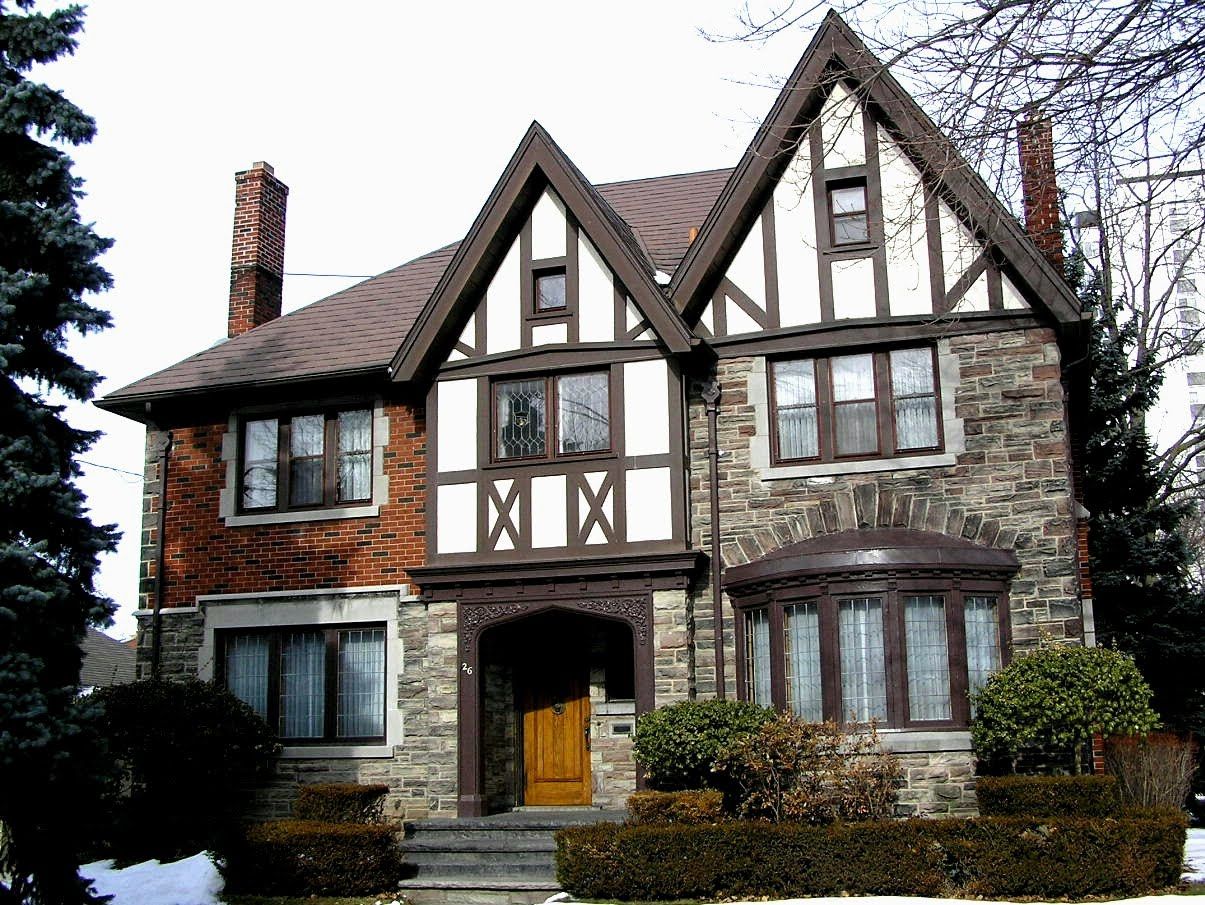#14938. Elegant Tudor Facade with Contrasting Half-Timbered Elements

The house presented is an excellent example of Tudor-style architecture, attracting attention with its characteristic contrasting facade. The building features expressive pointed gables and traditional decorative half-timbering with dark beams against light stucco—one of the key elements of Tudor style. The facade skillfully combines several materials: natural stone forms the foundation of the ground floor and the right part of the house, red brick is used for the left wing, and decorative wooden elements create a recognizable pattern on the upper floors.
The main entrance deserves special attention with its stone arch and wooden door in a warm honey shade, which creates an inviting accent. The window openings are diverse in shape and size—there are classic rectangular windows with wooden frames and an elegant bay window with a semi-circular completion on the first floor of the right wing. The stained glass window above the entrance adds elegance and reflects the historical authenticity of the style.
The steep-sloped roof with characteristic brick chimneys complements the overall composition, emphasizing the vertical lines of the building. The landscape design with neatly trimmed shrubs and coniferous trees harmoniously frames the structure, enhancing its English charm.
When designing a facade in a similar style, it's important to pay attention to the authenticity of materials, proportions of decorative elements, and color scheme. Modern technologies allow recreating the Tudor style using more accessible materials while maintaining visual authenticity and expressiveness. Key techniques may include contrasting combinations of dark beams and light walls, use of combined materials, and an asymmetrical but balanced facade composition.